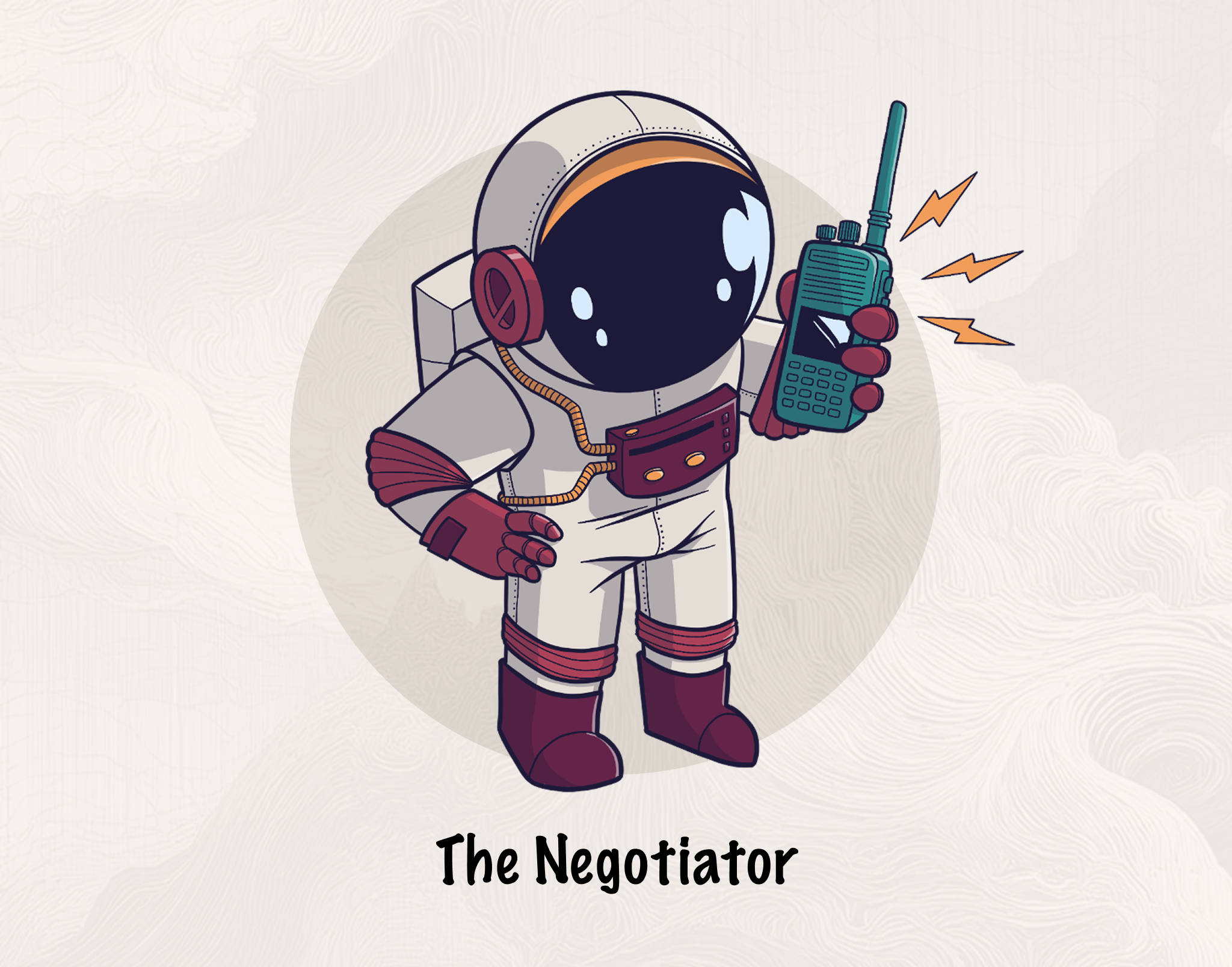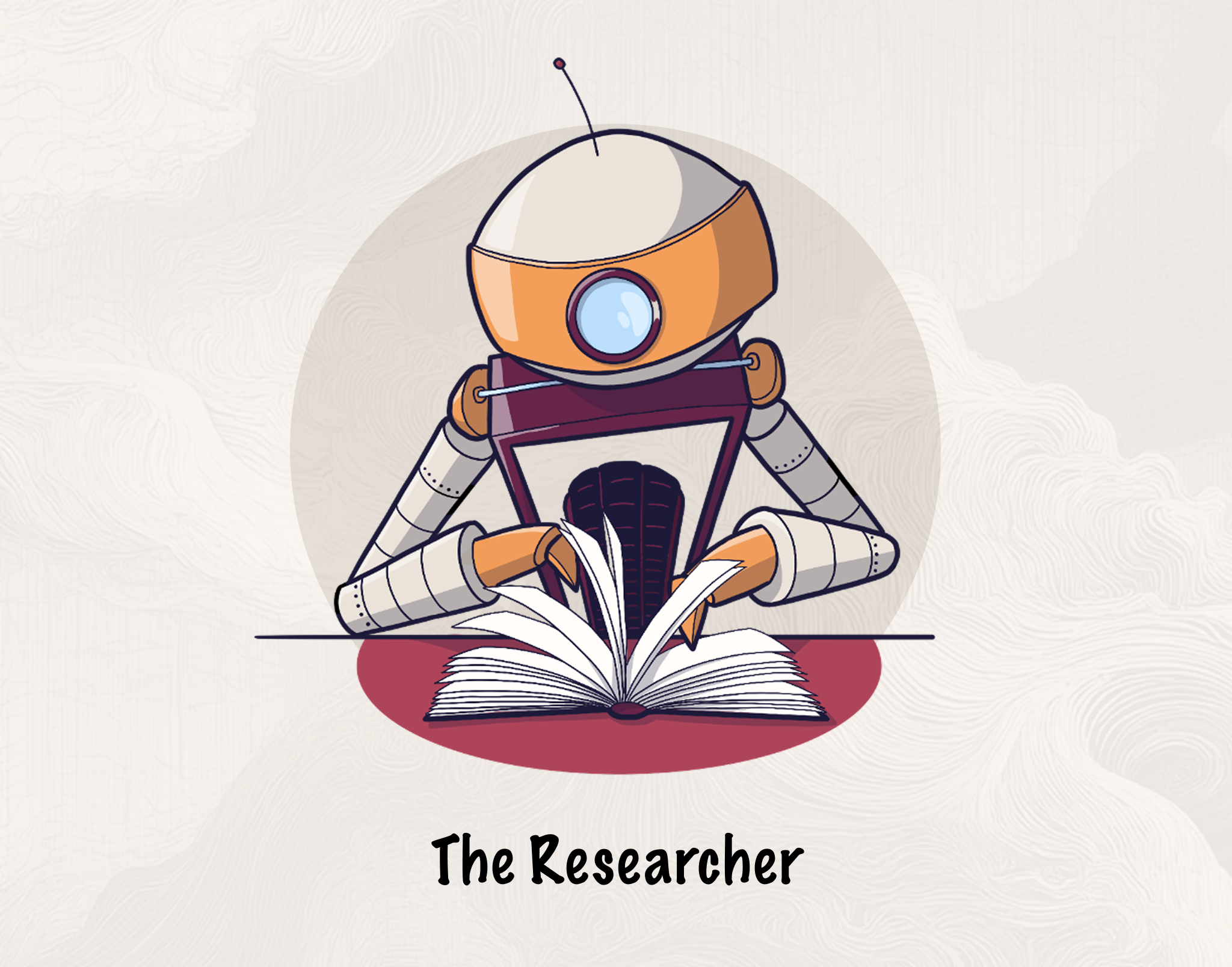The 5 essential team members you need to build a revolutionary tech product
Image generated with Midjourney.
Are you expending a lot of energy trying to force yourself to do everything–even things you’re not good at? Are you delaying bringing the team into your vision? Way too many visionaries try to carry more than they should, stretching themselves into roles they aren’t well-suited to. However, products that succeed do so because they incorporate a team that hits all of the right angles by letting each person do what comes naturally to them.
The sneaky reason why visionaries resist building strong teams
As a visionary, you have a razor-sharp viewpoint, a lot of optimism, and an above-average risk tolerance. All of these characteristics have propelled you to where you are now—leading (or hoping to lead) a revolutionary tech product. Most people don’t, or can’t, or won’t do it—but you can, and do, and will. It’s a unique superpower.
The other side of that coin is that, if you aren’t aware of what’s happening, these characteristics are also likely to make you resistant to letting others into the fold (or letting them in but not giving them much power once they get there). You may tell yourself that you’re the only one who can do it right, or who cares enough, or who gets the vision, or some other lie. That’s your fears pandering to your ego, and you need to root that out immediately.
There’s no debate. Teams are more effective (1), smarter (2), more creative (3), and faster (4) with diverse viewpoints than with homogenous ones. For example, research cited in the Harvard Business Review found that diverse teams were 58% more likely to price stocks correctly than less diverse teams (2). Rice University found that diversity of thought, especially from low-power employees, led to more creative solutions than a lack of it.
Your team is unlikely to be the exception to this rule. Although a strong visionary leader is crucial , the most dedicated visionary (we call this person a “Green Shirt”) will never succeed alone. The more complex the problem, the more true this is.
Shouldn’t you work on your weaknesses so you can do it all?
There’s a certain flavor of business leadership that argues you should figure out your own weaknesses and put a good share of your effort into ‘fixing’ them—thus turning yourself into the perfect, invincible leader.
Working on weaknesses can be good in some cases: if your weakness is a lack of knowledge in a certain area where you already have personality fit and interest, learning more is an easy fix to wipe a weakness off the board.
It’s also a good fit when the weakness has to do with some wound inside yourself that needs healing—maybe you feel insecure about your competence in a particular subject matter or have issues around money or success. By all means, invest in therapy or whatever it takes to fix that. You and those around you will be a lot better off.
What’s less effective—though I see people doing it all the time and have attempted it myself—is trying to fix a weakness that really stems from a lack of personality fit, interest, or both, by brute-forcing your way through it.
If you’re an impatient person, trying to become great at Quality Assurance is probably going to make you miserable and make those around you want to crawl over hot coals to get away from you. If you would rather reorganize your emails from 2013 than go to a networking event, reading a few personal development books isn’t going to magically change your personality.
But there is always value to self-awareness: it can let you know when to bring in someone else. In most cases, several someones.
That’s right: this is a time when you have full permission—even encouragement—to stop at awareness of your weaknesses and the humility to bring in other voices instead of trying to fix yourself. Let others who are naturally inclined in the areas in which you are weak do those things. Your product will be stronger for it.
The 5 key allies you and your project need
We find there are 5 specific personalities you want to bring into your product team to make it effective. You can think of these as characters; they each have their own way of seeing the world that brings a valuable contribution to the cause:
The Guardian: Protecting your organization at all costs
Guardians likely have a long history with your organization and are deeply involved in the details. They tend to remember the times things went wrong and can recount that one time 12 years ago when that board member said that wild thing. They have the wisdom of experience and can protect your revolution from common pitfalls.
The Empath: Keeping users at the center
Empaths care deeply about the customer are able to quickly and easily put themselves in the their shoes without being asked. They’re the one who’s volunteering in meetings, “We can’t do x because the customers won’t be willing to do that.” They will help you understand where you need to work harder to connect with the end users—often in very polite conflict with the Guardian.
The Challenger: Pushing for excellence
Challengers are unafraid of irritating others by asking a “Wouldn’t it be best if?” question. Everyone holds their breath when a meeting is winding down and they come off mute. You’ll be tempted to leave them off the list, but there’s going to be a moment along the journey where they come up with a critical contribution that makes your product so much better. Keep them.
The Negotiator: Resolving conflicts and driving decisions
Often a manager of some sort, this person takes in the information and conflicts and works to resolve them. They remain calm and ask a lot of questions. They may not be a domain expert in any particular area, but they are good at continuing to ask questions and unafraid to make a decision. Indecision kills more projects than wrong decisions, so they’re a crucial ally to keep things moving forward.
The Researcher: Finding the breakthrough insights
Many of the preceding archetypes are talk-oriented. Their power lies in discussion. Discussion is great, but someone needs to be willing to roll up their sleeves and find the answer. The Researcher is that person. While others talk, they stay quiet and then go on a deep dive after the meeting. That deep dive is often the source of your greatest breakthroughs. Don’t go on your quest without them.
Get it Done vs. Make it Special
Within your team, you also want a mix of what we call “Get it Done” energy and “Make it Special” energy. Too much “Get it Done” energy and you won’t be happy with the end result. Too much “Make it Special” energy and the thing will never launch, or you’ll fritter away precious resources making even little-used corners of the product magical. To succeed, you need the tension between the two.
I want to take a minute to explain the use of the word ‘tension’ here. Tension isn’t a bad thing. Without tension, a tightrope walker couldn’t balance. Without tension, a suspension bridge would fall. Tension provides the strength and backbone needed to keep the project upright and moving forward.
Right about now, you might be saying to yourself, “But do I care about both of those things”—and that’s probably true. Most people recognize the inherent importance of both, and one person might embody each of those at various times in their career. My default is to be a Make it Special person, but bring in a tight deadline or other urgent situation and I become a Get it Done person. I’m capable of either, but I have a leaning. Even though I can be coaxed into either, it’s very, very difficult for me (or any one person) to embody both of those at the same time.
On the People-Friendly Techteam, we’re conscious of this on every project, early on. We want a mix of Get it Done and Make it Special energies. We know who on our team embodies each of those most easily, and we make sure the point and counterpoint are always installed on the project from the outset.
Making room for psychological Safety on your product team
None of this works unless you, the leader, can provide psychological safety for the team. In fact, one Harvard study found that diversity can actually have a negative effect on team effectiveness unless there is high psychological safety (2).
It’s crucial you don’t let your impatience to get to the end result lead you to be critical of those who voice valuable considerations. When you feel that urge to swat away a concern, take a moment and examine what’s going on within yourself. Is there really no threat from the concern the person is bringing up? If so, it probably wouldn’t bother you—and it’s still good that they voiced it. Thank them and explain why it’s not something to worry about. On the other hand, if it does have merit, consider why you’re reacting defensively. Have you stretched yourself too thin? Have you set unrealistic expectations (internally or externally) that don’t allow for handling this? Those are management problems for you to solve—not the question-asker’s problem.
Notes
Swartz, T. H., Palermo, A.-G. S., Masur, S. K., & Aberg, J. A. (2019). The science and value of diversity: Closing the gaps in our understanding of inclusion and diversity. The Journal of Infectious Diseases, 220(Suppl 2), S33–S41. https://doi.org/10.1093/infdis/jiz174
Rock, D., & Grant, H. (2016, November 4). Why diverse teams are smarter. Harvard Business Review. https://hbr.org/2016/11/why-diverse-teams-are-smarter
Rice Business Wisdom. (2023). Diverse teams inspire low-power employees to be more creative. Rice University. https://business.rice.edu/wisdom/diverse-teams-spark-creativity-and-drive-success
Robert Half. (2023). Why embracing different opinions in your team is important. Robert Half. https://www.roberthalf.com/gb/en/insights/management-tips/why-embracing-different-opinions-your-team-important
Bresman, H., & Edmondson, A. C. (2022, March 17). Research: To excel, diverse teams need psychological safety. Harvard Business Review. https://hbr.org/2022/03/research-to-excel-diverse-teams-need-psychological-safety






